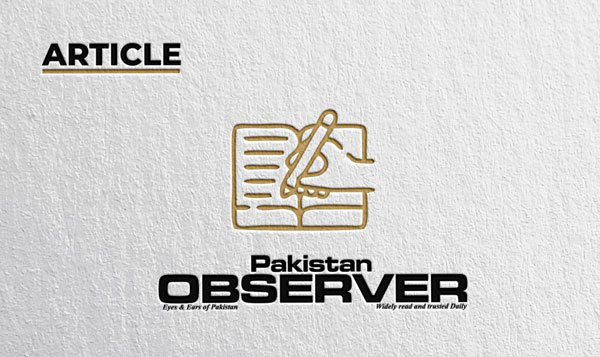PAKISTAN’S climate crisis is no longer a future concern. It’s here, knocking on our doors. I still remember the 2022 floods, the images of a third of the country submerged in water, millions forced out of their homes, schools destroyed, and agriculture devastated. The destruction was unimaginable. What gives hope is seeing the youth of Pakistan step up. Around 70% of the population is under 30, and it’s inspiring to see young people taking charge. In almost every province, there are countless activists working hard to tackle the climate issue. In Pakistan, especially in the flood affected areas, young people were on the ground, doing everything they could to rebuild their communities and support those in need. Their energy and commitment are exactly what we need most in these challenging times.
Young Pakistanis are taking action. In Baluchistan, they plant trees in harsh conditions, while others code apps to predict monsoons—all while managing their studies. Even TikTok is being used to spread climate awareness, turning a criticized platform into a tool for change. Digital activism is reshaping the movement—bloggers used satellite images to track the Billion Tree Tsunami project amid mismanagement claims, while Lahore teenagers built a low-cost air quality monitor and shared it via WhatsApp. “We don’t need expensive labs,” says 18-year-old Ayesha. “We need solutions.” Despite their innovation, the youth of Pakistan are still left out of formal climate discussions. The National Adaptation Plan, which promises to build resilience, does not include a proper system for young people’s voices to be heard. The Green Youth Movement, a government initiative to involve students, often reduces youth to mere symbols of tree planting. While officials debate funding in air-conditioned rooms, young people are leading efforts on the ground. In Khyber Pakhtunkhwa, volunteers used Google Earth to map villages at risk of landslides, warning communities before disasters struck. In Karachi’s poorer areas, girls run “climate libraries,” teaching others about renewable energy.
Pakistan’s education system, however, is stuck in the past. Environmental science is limited to textbooks with no real focus on practical solutions. A 2023 survey revealed that 80% of students didn’t even know what a “carbon footprint” was. But young people are changing this. At LUMS, engineering students built a solar-powered irrigation system for drought-hit farms in Thar. In Quetta, a group of teens runs weekend workshops on composting, turning waste into fertilizer. The British Council’s Pakistan Youth Leadership Initiative has trained over 290,000 young people in climate activism, combining traditional knowledge with modern technology. The private sector is beginning to notice the potential of young people. Eco-start-ups like TrashIt (which recycles plastic into construction materials) and Solaric (rentable solar panels for off-grid villages) are growing, all driven by founders under 30. However, funding remains limited. “Investors want quick returns, not sustainable solutions. Big companies like Nestlé Pakistan and Engro are now supporting youth-led green businesses, offering mentorship and microloans. While progress is slow, it’s undeniable. As Amir Parvez, CEO of a Lahore-based tech company, put it: “The youth don’t just want jobs—they want purpose.”
The challenges, however, are tough. The youth in rural areas, who are hit hardest by climate disasters, don’t have access to the internet or platforms to raise their voices. Young women, especially, face huge challenges; many of female climate leaders report harassment online. But staying quiet won’t help us. To unlock the potential of young people, Pakistan needs to decentralize climate decisions, giving provinces the power to create their own solutions. The issues in Baluchistan, Kashmir, GB and Sindh like water scarcity are different from the air pollution in Punjab. Instead of just holding symbolic tree-planting drives, funding needs to go towards youth-led tech projects and start-ups. We also need to make sure that marginalized voices like rural youth, women, and minorities are heard in climate task forces. Schools must change, too, by teaching climate awareness in every subject, whether it’s math, science, or even art.
The youth of Pakistan aren’t waiting for help they are the help. When the 2022 floods happened, students used Twitter Spaces to organize rescues. When glaciers start to melt, mountaineers turned activists share the news on YouTube. Their message is clear: we know the problem, and we’re working on the solution. Join us, or get out of the way. The fight against climate change isn’t about saving the planet; it’s about saving each other. Pakistan’s youth are done asking for change. They’re making it happen, one social media post or video, one solar panel, and one policy at a time. The real question is not whether they will succeed, but whether the rest of us will finally catch up.
—The writer is a young activist who comes from Islamabad and now lives in Dubai.
(engineerhammad786@gmail.com)










